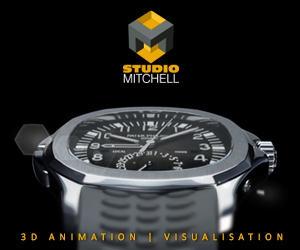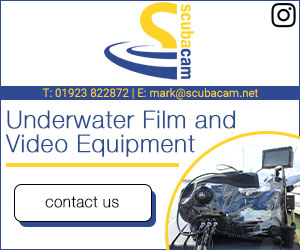Broadcast News
02/11/2017
Broadcasters & Post Production Facilities Digitising Legacy Tape Formats

The first in a series of articles by Pat Horridge of VET Training covering the issues facing broadcasters and post houses needing to digitise legacy tape formats.
Pat, a former broadcast service engineer then technical director of the Shoreditch based VET post house, now delivers broadcast and post house QC training and Avid workflows on site for clients. Along with post production overview courses and general understanding digital media training. Full details at the VET website www.vet.co.uk.
Some of the information provided is also common to restoration and archiving however the needs of broadcast TV are less demanding and the information in these articles is based on the assumption that the process is for TV ingest. For Archiving purposes the situation is often more complex and demands a more robust workflow, often for a greater volume of content.
Having worked specifically for organisations dealing with archiving legacy content the selection of playback equipment has more to do with achieving the best quality playback and protection of the tapes than a cost effective "ok for TV" approach.
This is covered in 5 articles:
• Legacy tape formats. What are they and how do we define them?
• How do we store audio/video content on magnetic tape?
• Aged tape considerations and solutions
• What could possibly go wrong using that old VTR to play my legacy tape?
• The ingest process for best results.
Legacy tape formats. What are they and how do we define them?
So what do we mean by legacy formats? For the most part these are tape formats that are not commonly in use in day to day post production. Mostly we should consider these to be analogue formats. But as time passes even the digital formats are becoming "legacy".
Before the move to file based delivery the broadcast TV & post production industries had relied upon a small number of manufacturers for the development and evolution of tape based recorders/players. This evolution goes back a long way covering a range of formats and some more than others have had an impact on TV & post production.
A brief overview of those formats and their evolution are:
Reel based 2" Quad machines in the late 50s early 60s but due to the high tape costs and compatibility issues there isn't a large collection of old recordings.
Cassette-based recorders which were far easier to use and handle content were introduced with Sony's ¾" U-matic in the early 70s. (¾ inch is the tape width).
In the UK we ended up with 3 U-matic versions, Low-band, High-band and High-band SP (The SP stands for Superior Performance).
Reel based 1" machines came in the late 70s and were produced by Ampex and Sony to replace the complex and difficult to manage 2" machines.
From there we moved into Betacam and Betacam SP cassette based VTRs. Panasonic had its MII format (late 80s) and that had some takers but Sony pretty much ruled the roost.
A number of digital cassette based formats like D1 (Sony), D2 (Ampex), D3 (Panasonic) came and went as replacements for the older reel to reel machines. A reasonable amount of content exists in these formats, particularly as a lot of interest was generated in using these new digital cassette based formats for archive with the BBC adopting D3 for its archives. 315,000 D3 archive tapes were generated by the BBC before D3 was declared obsolete in 2007 and the BBC started moving that content to file based.
Then we started to see Digital formats like DV, DVCAM, DVCPro and Sony's DigitBeta (launched early 90s). Sony's DigiBeta was popular as the "A" versions of the machines could playback analogue BetaSP tapes as well as the newer DigiBeta tapes.
That was all in the SD (Standard Definition) domain and was superseded by HD in the late 90s. There were a few HD Analogue formats but these didn't really impact on TV and broadcast.
For that we had to wait for HDCAM and DVCPro HD both of which were subsampled so not full 1920 pixels wide. That didn't come till HDCAM SR and this became the defacto Broadcast and Post deliverable format along with Panasonics D5.
And then of course we have a whole range of non-broadcast formats like: Betamax, VHS, SVHS, Hi8, Digital-8, Mini-DV, HDV and more. So, we have a rich and varied selection of formats spanning early analogue through to later digital formats.
It is impossible to estimate the billions of hours of video content that exists on these formats or how they are distributed. Some of that content will already have been digitised (captured and converted to file based content) although just how well that has been done and how representative the quality of the digital file is to the original source is open to speculation.
The tsunami that hit Japan in 2011 had a massive impact on the move away from tape based to file based delivery. The damaged caused to the Sony tape plant in Japan started to cause a shortage in HDCAM SR tape stock, a stable for broadcast delivery from post houses. As always the shortage was made worse by some of the bigger facilities buying bulk and stock piling.
Significantly, we already had file-based workflows. Many cameras already produced file based outputs, NLE systems worked with files and could output files and most broadcasters had moved to file based server playout systems. Tapes had been retained as the convenient "normalising" factor. Tapes also formed a useful bridge between different digital storage systems.
With the creation of the Digital Production Partnership we saw the standardisation and implementation of Broadcast file delivery in the form of AS-11 files in both SD and HD and it's been a very fast development to tapeless post houses. Tape has become the oddity rather than the norm. But broadcasters and post houses still have to access some of those billions of hours or content stored on tape formats.
In the next edition we'll be looking at how we actually store the content on magnetic tape so we can better understand the challenges of achieving accurate playback.
Article by Pat Horridge at VET Training.
www.vet.co.uk
(JP)
Pat, a former broadcast service engineer then technical director of the Shoreditch based VET post house, now delivers broadcast and post house QC training and Avid workflows on site for clients. Along with post production overview courses and general understanding digital media training. Full details at the VET website www.vet.co.uk.
Some of the information provided is also common to restoration and archiving however the needs of broadcast TV are less demanding and the information in these articles is based on the assumption that the process is for TV ingest. For Archiving purposes the situation is often more complex and demands a more robust workflow, often for a greater volume of content.
Having worked specifically for organisations dealing with archiving legacy content the selection of playback equipment has more to do with achieving the best quality playback and protection of the tapes than a cost effective "ok for TV" approach.
This is covered in 5 articles:
• Legacy tape formats. What are they and how do we define them?
• How do we store audio/video content on magnetic tape?
• Aged tape considerations and solutions
• What could possibly go wrong using that old VTR to play my legacy tape?
• The ingest process for best results.
Legacy tape formats. What are they and how do we define them?
So what do we mean by legacy formats? For the most part these are tape formats that are not commonly in use in day to day post production. Mostly we should consider these to be analogue formats. But as time passes even the digital formats are becoming "legacy".
Before the move to file based delivery the broadcast TV & post production industries had relied upon a small number of manufacturers for the development and evolution of tape based recorders/players. This evolution goes back a long way covering a range of formats and some more than others have had an impact on TV & post production.
A brief overview of those formats and their evolution are:
Reel based 2" Quad machines in the late 50s early 60s but due to the high tape costs and compatibility issues there isn't a large collection of old recordings.
Cassette-based recorders which were far easier to use and handle content were introduced with Sony's ¾" U-matic in the early 70s. (¾ inch is the tape width).
In the UK we ended up with 3 U-matic versions, Low-band, High-band and High-band SP (The SP stands for Superior Performance).
Reel based 1" machines came in the late 70s and were produced by Ampex and Sony to replace the complex and difficult to manage 2" machines.
From there we moved into Betacam and Betacam SP cassette based VTRs. Panasonic had its MII format (late 80s) and that had some takers but Sony pretty much ruled the roost.
A number of digital cassette based formats like D1 (Sony), D2 (Ampex), D3 (Panasonic) came and went as replacements for the older reel to reel machines. A reasonable amount of content exists in these formats, particularly as a lot of interest was generated in using these new digital cassette based formats for archive with the BBC adopting D3 for its archives. 315,000 D3 archive tapes were generated by the BBC before D3 was declared obsolete in 2007 and the BBC started moving that content to file based.
Then we started to see Digital formats like DV, DVCAM, DVCPro and Sony's DigitBeta (launched early 90s). Sony's DigiBeta was popular as the "A" versions of the machines could playback analogue BetaSP tapes as well as the newer DigiBeta tapes.
That was all in the SD (Standard Definition) domain and was superseded by HD in the late 90s. There were a few HD Analogue formats but these didn't really impact on TV and broadcast.
For that we had to wait for HDCAM and DVCPro HD both of which were subsampled so not full 1920 pixels wide. That didn't come till HDCAM SR and this became the defacto Broadcast and Post deliverable format along with Panasonics D5.
And then of course we have a whole range of non-broadcast formats like: Betamax, VHS, SVHS, Hi8, Digital-8, Mini-DV, HDV and more. So, we have a rich and varied selection of formats spanning early analogue through to later digital formats.
It is impossible to estimate the billions of hours of video content that exists on these formats or how they are distributed. Some of that content will already have been digitised (captured and converted to file based content) although just how well that has been done and how representative the quality of the digital file is to the original source is open to speculation.
The tsunami that hit Japan in 2011 had a massive impact on the move away from tape based to file based delivery. The damaged caused to the Sony tape plant in Japan started to cause a shortage in HDCAM SR tape stock, a stable for broadcast delivery from post houses. As always the shortage was made worse by some of the bigger facilities buying bulk and stock piling.
Significantly, we already had file-based workflows. Many cameras already produced file based outputs, NLE systems worked with files and could output files and most broadcasters had moved to file based server playout systems. Tapes had been retained as the convenient "normalising" factor. Tapes also formed a useful bridge between different digital storage systems.
With the creation of the Digital Production Partnership we saw the standardisation and implementation of Broadcast file delivery in the form of AS-11 files in both SD and HD and it's been a very fast development to tapeless post houses. Tape has become the oddity rather than the norm. But broadcasters and post houses still have to access some of those billions of hours or content stored on tape formats.
In the next edition we'll be looking at how we actually store the content on magnetic tape so we can better understand the challenges of achieving accurate playback.
Article by Pat Horridge at VET Training.
www.vet.co.uk
(JP)
Top Related Stories
Click here for the latest broadcast news stories.
12/12/2017
Broadcasters & Post Production Facilities Digitising Legacy Tape Formats: Pt 4
The fourth in a series of articles by Pat Horridge of VET Training covering the issues facing broadcasters & post houses needing to digitise legacy ta
Broadcasters & Post Production Facilities Digitising Legacy Tape Formats: Pt 4
The fourth in a series of articles by Pat Horridge of VET Training covering the issues facing broadcasters & post houses needing to digitise legacy ta
02/01/2018
Broadcasters & Post Production Facilities Digitising Legacy Tape Formats: Pt 5
The fifth, and final, in a series of articles by Pat Horridge of VET Training, covering the issues facing broadcasters & post houses needing to digiti
Broadcasters & Post Production Facilities Digitising Legacy Tape Formats: Pt 5
The fifth, and final, in a series of articles by Pat Horridge of VET Training, covering the issues facing broadcasters & post houses needing to digiti
04/12/2017
Broadcasters & Post Production Facilities Digitising Legacy Tape Formats: Pt 3
Broadcasters & Post Production Facilities Digitising Legacy Tape Formats The third in a series of articles by Pat Horridge of VET Training covering th
Broadcasters & Post Production Facilities Digitising Legacy Tape Formats: Pt 3
Broadcasters & Post Production Facilities Digitising Legacy Tape Formats The third in a series of articles by Pat Horridge of VET Training covering th
15/11/2017
Broadcasters & Post Production Facilities Digitising Legacy Tape Formats: Pt 2
The second in a series of articles by Pat Horridge of VET Training covering the issues facing broadcasters & post houses needing to digitise legacy ta
Broadcasters & Post Production Facilities Digitising Legacy Tape Formats: Pt 2
The second in a series of articles by Pat Horridge of VET Training covering the issues facing broadcasters & post houses needing to digitise legacy ta
16/05/2011
HotCam Reports Boost In Alternative Formats Due To HDCAM SR Tape Shortage
Leading broadcast equipment rental company HotCam has added extra Panasonic HDX900 camera packages to its inventory after reporting a surge in demand
HotCam Reports Boost In Alternative Formats Due To HDCAM SR Tape Shortage
Leading broadcast equipment rental company HotCam has added extra Panasonic HDX900 camera packages to its inventory after reporting a surge in demand
04/12/2008
Front Porch Digital Launches All-In-One Product For Migrating Content From Videotape To Data Tape
Front Porch Digital, a leader in content storage management for media operations worldwide, has launched DIVAsolo, the world's first all-in-one path f
Front Porch Digital Launches All-In-One Product For Migrating Content From Videotape To Data Tape
Front Porch Digital, a leader in content storage management for media operations worldwide, has launched DIVAsolo, the world's first all-in-one path f
12/11/2019
LTO Ultrium Tape…A Breakthrough Product In Data Storage
PMD Magnetics is one of the longest standing suppliers of LTO tape media in Europe, starting the business back in 1977. Managing Director, Geoff Dance
LTO Ultrium Tape…A Breakthrough Product In Data Storage
PMD Magnetics is one of the longest standing suppliers of LTO tape media in Europe, starting the business back in 1977. Managing Director, Geoff Dance
16/05/2018
LTFS Changes The Way People Look And Use LTO Tape - Rowsell
BFV talks exclusively with Polar Graphics Marketing Manager Katy Rowsell about the company's growth and how the LTFS software changes the way people u
LTFS Changes The Way People Look And Use LTO Tape - Rowsell
BFV talks exclusively with Polar Graphics Marketing Manager Katy Rowsell about the company's growth and how the LTFS software changes the way people u
13/11/2017
Rosco Enhances RoscoLED Tape Product Range
Rosco Laboratories has announced an expansion of its RoscoLED Tape product range. The additions feature the same qualities as the original RoscoLED pr
Rosco Enhances RoscoLED Tape Product Range
Rosco Laboratories has announced an expansion of its RoscoLED Tape product range. The additions feature the same qualities as the original RoscoLED pr
24/09/2012
Front Porch Digital Donates SAMMAsolo Tape Migration System
Front Porch Digital have announced that it has donated a SAMMAsolo single-stream multiformat tape migration system to Association FL@H, the associatio
Front Porch Digital Donates SAMMAsolo Tape Migration System
Front Porch Digital have announced that it has donated a SAMMAsolo single-stream multiformat tape migration system to Association FL@H, the associatio
14/12/2009
Positive Changes To EIS Burdened By Red Tape
Despite the announcement in the Pre-Budget Report (PBR) of the long-expected clamp-down on the use of the Enterprise Investment Scheme (EIS), media in
Positive Changes To EIS Burdened By Red Tape
Despite the announcement in the Pre-Budget Report (PBR) of the long-expected clamp-down on the use of the Enterprise Investment Scheme (EIS), media in
03/12/2009
Sony Announces Boost In European HDCAM SR Tape Sales
Sony Professional has announced significant momentum in sales of its HDCAM SR tapes in Europe. Since 2003, more than 250,000 tapes have been sold in E
Sony Announces Boost In European HDCAM SR Tape Sales
Sony Professional has announced significant momentum in sales of its HDCAM SR tapes in Europe. Since 2003, more than 250,000 tapes have been sold in E
27/03/2009
Codex Digital Aims To Eradicate Tape 'Workflow Roadblocks'
Codex Digital is set to arrive at NAB 2009 in an upbeat mood with its media recording products ensconced on a variety of flagship broadcast and motion
Codex Digital Aims To Eradicate Tape 'Workflow Roadblocks'
Codex Digital is set to arrive at NAB 2009 in an upbeat mood with its media recording products ensconced on a variety of flagship broadcast and motion
24/09/2008
Dalet Migrates Russian TV From Tape To Digital
A software company that works with broadcasters and content professionals to produce and manage audio and video, Dalet Digital Media Systems, has anno
Dalet Migrates Russian TV From Tape To Digital
A software company that works with broadcasters and content professionals to produce and manage audio and video, Dalet Digital Media Systems, has anno
24/01/2007
Bryco Tape Storage Provides Storage Solution For Hospital
Bryco storage containers have created a tidy and efficient work space in the medical illustration department at Heart of England NHS Foundation Trust.
Bryco Tape Storage Provides Storage Solution For Hospital
Bryco storage containers have created a tidy and efficient work space in the medical illustration department at Heart of England NHS Foundation Trust.















